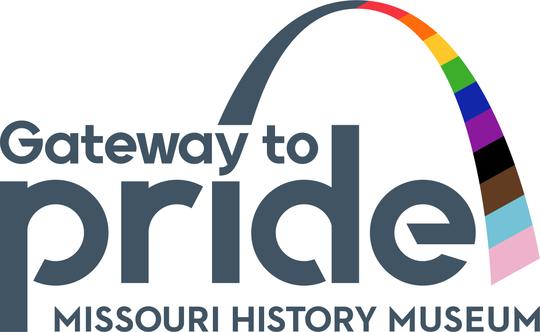1949 Police Training
Preface: An educational course administered to the St. Louis Police Department in 1949 was cited as a model for other cities and demonstrates the degree of exposure fifties-era police had to popular moral views of the time. The course opened with a reading of the Biblical chapters of Leviticus and addressed social morality on the subject of homosexuality. The following academic paper reviewed the course.
The Education of a Metropolitan Police Department Respecting Sex Molestation
by Val B. Satterfield
Val B. Satterfield, M. D., is the Consultant Psychiatrist, St. Louis Police Academy, and Assistant Professor of Clinical Psychiatry, Washington University, School of Medicine, St. Louis. Dr. Satterfield has been active in the formation of the Academy of Forensic Sciences and is serving now as Chairman of its Psychiatric Section. This paper was read at the 1950 Annual Meeting of the Academy:
The St. Louis Police Department is continuing its program for the education of its personnel respecting sex molestation, and a brief outline and description of ifts nature and progress is given herewith. The conception of the program occurred following the first meeting of the Academy of Forensic Sciences in January 1948, sponsored by the St. Louis Police Department. The interest aroused in scientific methods was intense, and the possibility of educating the Police Department in reference to specific topics was considered.
As a part of this development, it was believed that the problem of sexual molestation could be profitably surveyed. St. Louis has never had an acute sexual molestation problem, and no pressures of any type encouraged this selection. The topic was considered limited in scope and one that might be dealt with as the subject matter of two hour lectures.
The St. Louis Police Academy gives a week of intense refresher experience to every police officer in St. Louis, passing them through the Academy in small groups throughout the Spring, Summer, and Fall of each year. In addition, recruit classes are given a full course of instruc- tion, and this project was included in the recruit class curriculum. The problem then consisted of organizing material on a plan of instruction for sixty men utilizing a two hour period.
The program was started in the Summer of 1949 and was very timely in that the project was well along when national interest became focused upon a nation-wide flurry of cases of sexual molestation. Again, this increased activity did not hit St. Louis with any force, but the newspapers and general public were reassured by the well organized plan of the St. Louis Department.
As a result of this interest a new state law covering the management and institution of sexual psychopaths was passed by the legislature, and considerable favorable publicity came to the City of St. Louis. The members of a large metropolitan police force can be considered to be quite different in their experience from the average collection of students.
They have had wide experience in all types of human activity, and although they have not been able to critically analyze much of this experience, they have in a usable form a very profound understanding of city dwellers.
It was considered that it would be necessary to "talk up to" their experience using common everyday language and drawing for them dramatic pictures of the events and personalities involved in sexual molestation. A presentation that would be provocative of the wide experience of these men would bring into the discussion period material that was more acceptable because it came from their fellow officers. In the beginning it was evident that several types of resistances and difficulties had to be overcome.
Although officers of the St. Louis Police Department are accustomed to instruction in the Police Academy, it was considered that resistance to instruction, especially from one other than a police officer, must be made acceptable through the avoidance of any unrealistic handling of the material. It was also evident that many of the members of the St. Louis Police were devout and had strong feelings of right and wrong and of social appropriateness. To meet this condition there had to be an honest dealing with social morality free from cynicisms.
The disturbing quality of the material under discussion was considered, and the presentation of the material and the management of the class was conducted in such a way as to reassure and relieve members of the class who were visibly affected. The teaching periods were divided into two portions. The first portion was devoted to demonstration and lecture, and the second to questions and answers and class discussion. The material selected for the lecture and demonstration was as follows: As an introduction there was a reading from the Book of Leviticus of the Holy Bible, beginning at verse ten of chapter twenty.
This was done for the purpose of giving a historical background beginning in ancient times, and led into developments in the last century including the Jesse Pomeroy case of Boston. There was then a brief survey of conditions as they exist at this time throughout the world. The theme of this background was social morality, dis- cussing the attitude of society toward behavior, including and putting emphasis on the other types of behavior that are objectionable to society, keeping sex out of the foreground until there appeared to be acceptance of what social attitude and its fluctuation means.
This was then integrated into religious, aesthetic, and social idealism. The approach to the biological and physiological aspects of sex behavior proved to be very acceptable, provided that the parallels of bladder and bowel func- tion and nursing were thoroughly discussed. The similarity between male and female anatomy and the potentials for variance were under- stood readily if diagrams were used for demonstration. For the purpose of instruction, sexual variance was discussed in its longitudinal aspect with the infantile, adolescent, and adult variance emphasized.
The psychological mechanisms involved were explained with recourse to their own infantile and developmental experience. In order to maintain a sense of proportion, the types of behavior discussed were kept in a true relationship to all other types of social behavior of the individual of the same age. It was evident throughout this teaching experience that any swing far into the field of sexuality distracted from the result with a drop in interest due to a loss of orientation.
It was necessary at all times to keep the problem in some true proportion to the other types of behavior problems. As an introduction to the psychology of the offender the role of the victim of molestation was discussed. Police officers have a deep interest in the prevention of crime, and it was evident as lecture followed lecture that the officers were as interested in the characteristics of the victim that made him or her the object of the offender as they were in the mechanisms that brought about the act on the part of the offender.
As a result of the discussion periods it was evident that there was a strong need for the police officer to accept all types of antisocial and asocial behavior as being of the same order, and this was adopted as a method of presentation.
The sex offender was discussed emphasizing his personal and social problems and attempting to define the similarity and difference between him and other types of criminals. Here again it was apparent that there was willingness to accept the sexual criminal as part of the general criminal population.
There was acceptance of the fact that the "abominable" nature of the offense, and the quick reaction that "there must be something the matter with the mind of a person who would do that" frequently interfered with the inclusion of sex crimes into the mass of criminal offenses. It was not difficult to differentiate between crime as an expression of a maladjusted individual and crime as an expression of a psychotic individual. The question-and-answer and discussion periods found the officers surprisingly free in an expression of opinion and quick to narrate per- sonal experiences with various types of offenders.
The breadth of experience on the part of the sergeant and upper rank officers was evident in the more reasonable understanding that they possessed about the offender and his crime. The younger men were more frequently surprised and found it more difficult to orient themselves in respect to the material.
In the order of frequency, questions raised had to do with the influence of family training, the influence of bad associates, the danger to police officers in their relationships with offenders, the influence of the suppression of prostitution upon the frequency of sex offenses, the necessity of supressing homosexuality, the effects upon the character and intelligence of sex perversion, and the method of treatment of the offender of this type and in general offenders of all types.
As part of this educational program it became apparent that "live material" was invaluable as illustration. It was decided that the statistician of the St. Louis Police Department would begin a systematized gathering of reports to provide material respecting the offender, the victim, the time, the circumstances, and geographical peculiarities. An analysis was made of all available material and this proved invaluable in the strategic handling of the police work necessary to protect the adults and children of the City of St. Louis. As part of the educational program the work described above was supplemented by a period of instruction aimed at integration of this material into police procedures.
In summary the Police Department of the City of St. Louis has experimentally approached this topic to explore whether it might be integrated into the habits and experience of the police officers of that force. It has been a timely and valuable experiment in that it has given the community a sense of security and has acquainted the department with the material required for a closer application of prevention and enforcement to the real needs of the community.
As part of the research a questionnaire was sent to other police departments throughout the country, and it appears there is little in the way of statistics at hand respecting the experience of a metropolitan police force with the subject of sex molestation.
As a continuation of this study it is expected that refresher material of a live nature will be provided for subsequent training periods of the Academy. The organization of the experience in a presentable fashion for distribution is contemplated.
Source: Val B. Satterfield, "The Education of a Metropolitan Police Department Respecting Sex Molestation," Journal of Criminal Law, Criminology, and Police Science, 42:403 (May-June 1951).





